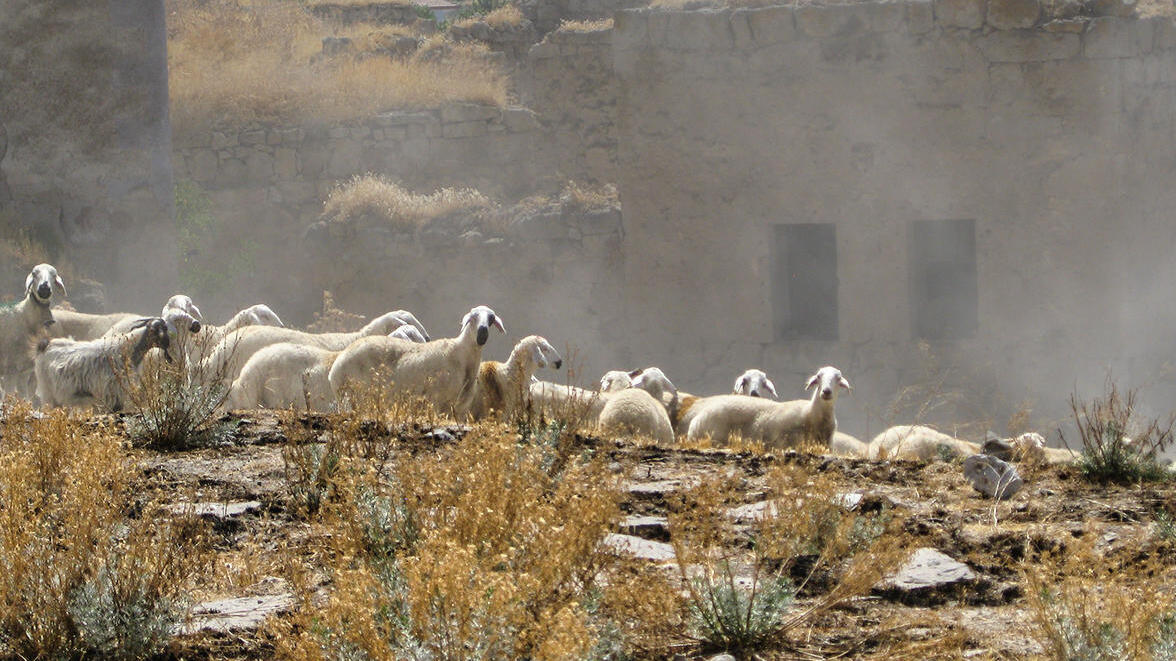Today’s domestic sheep in Eurasia predominantly belong to only two so-called genetic matrilines or maternal lines, which are inherited from the mother. Previous research assumed that genetic diversity declined rapidly in the early phase of wild sheep domestication. The study of complete mitogenomes from the early domestication site Asıklı Höyük in central Anatolia, which was populated between 10,300 and 9,300 years ago, refutes this assumption: despite a millennium of human influence on sheep husbandry and breeding, mitogenomic diversity remained consistently high, with five matrilines being detected, including a previously unknown line. The persistently high diversity of matrilines observed over the 1,000 years of sheep farming was unexpected for the researchers.
“In Aşıklı Höyük there were both sheep that were kept by the settlement residents and those that were hunted. We assume that occasionally the sheep herds were supplemented by local wild sheep when necessary, for example to compensate for losses due to disease or stress in captivity. It is quite possible that sheep were also exchanged over a wide area. A possible parallel to this can be found in the import of certain grain plants that are native to southeastern Anatolia,” explains Prof. Peters, interpreting the results of the study.
The different maternal lines or haplogroups can be imagined like the branches of a family tree. Animals that belong to a particular lineage have comparatively little variation in their mitochondrial genome because they descend from a common ancestor. Today, haplogroup B predominates in sheep in Europe and haplogroup A in East Asia. Consequently, mitogenomic diversity declined later in the domestication process or when sheep farming spread beyond its original region of domestication during the Neolithic – a question that remains unanswered.
To investigate this question, the international research team led by Prof. Joris Peters, State Collection of Paleoanatomy (SNSB-SPM) and Institute of Paleoanatomy (LMU Munich), Prof. Ivica Medugorac, Animal Population Genomics, LMU Munich, and Prof. Dan Bradley, Molecular Populations Genetics, Smurfit Institute for Genetics, Trinity College Dublin, the matrilineal affiliation and phylogenetic relationships of 629 modern and historical sheep across Eurasia.
Comparing the results from Aşıklı Höyük with altDNA signatures in archaeological sheep bones from later settlements in Anatolia and surrounding regions as well as in Europe and Central Asia clearly shows that mitogenomic diversity decreased significantly in the 9th millennium BCE. One consequence of this is the already mentioned dominance of matriline B in Europe. “We can now assume that this development is due to a so-called ‘bottleneck’. This occurred later in the Neolithic period, when sheep farming spread beyond the natural range of wild sheep following the early domestication of the species. The bottleneck is hanging “This is probably related to so-called founder effects: As animal husbandry expanded towards Europe, smaller herds were gradually removed from an already greatly reduced sheep population,” Peters continued.
“Particularly fascinating are the insights that have been gained through the integration of genetic and archaeological data sets. Together with the numerous other pieces of the mosaic that zooarchaeologists, archaeologists and geneticists have collected over decades, an increasingly coherent picture of human cultural adaptations is now emerging “Studies like these show that the domestication of animals should not be understood in the sense of a cross-generational plan, but rather as a process of chance and necessity that has significantly shaped our recent cultural history and still accompanies us today,” adds Prof .Ivica Medugorac.
